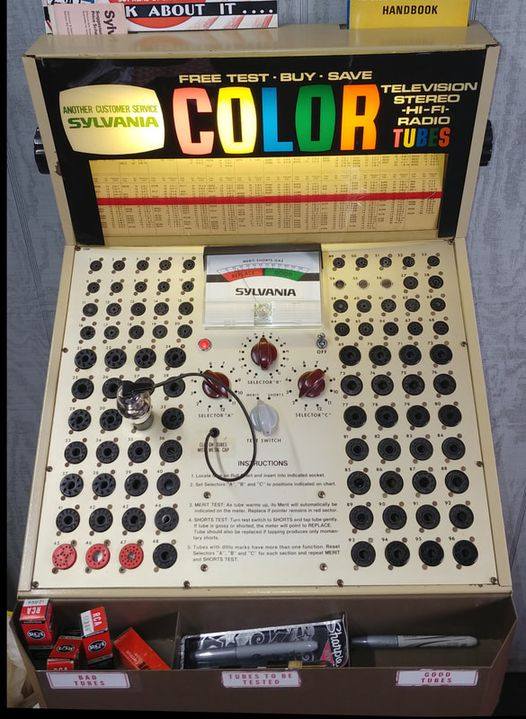this post was submitted on 10 Dec 2023
401 points (99.0% liked)
Technology
57473 readers
3561 users here now
This is a most excellent place for technology news and articles.
Our Rules
- Follow the lemmy.world rules.
- Only tech related content.
- Be excellent to each another!
- Mod approved content bots can post up to 10 articles per day.
- Threads asking for personal tech support may be deleted.
- Politics threads may be removed.
- No memes allowed as posts, OK to post as comments.
- Only approved bots from the list below, to ask if your bot can be added please contact us.
- Check for duplicates before posting, duplicates may be removed
Approved Bots
founded 1 year ago
MODERATORS
you are viewing a single comment's thread
view the rest of the comments
view the rest of the comments

I was not there, Gandalf. This was before even my time.
It tests vacuum tubes that would usually come from televisions. If a tube was bad you could hypothetically replace the tube and get your TV working again. The various holes are for the various tubes that were sold.
Vacuum tubes would eventually be replaced with transistor designs as transistors were more reliable and required way less power to operate. Also they were vastly smaller than tubes. Today most TVs are, in essence, a small computer packed into a single chip called a System on a Chip (SoC), so they are way less user repairable. But they're also vastly cheaper than the 1930s versions. In 1939 RCA's TV that they sold went for ~$600 or about $13,280 in today's money.
So there was a ton of incentive to make TVs as user repairable as possible. It's also why we used to have a lot of TV repair shops that we pretty much have zero of today. Putting that much investment into something, you'd want to make it run for as long as possible.
Love your description, but I would add that radios were arguably an even more common reason for people to replace tubes. Also, while television stations did exist as far back as the late 1920s it really wasn't until after WWII that it became semi-common for the middle class - I live in Denver and we didn't get our first station until 1952, for example.
The furniture-style console TVs still had tubes as late as the 1970s.
We had one very similar to this until about 1980..
It was easy to pop the back off (it had little hinges like the back of a picture frame) and the tubes were right there. Very simple fix. You’d miss your show, but it meant a fun trip to the electronics store with dad.
I remember laying on the floor in front of the TV and changing the channel with my foot. I was the remote control.
LOL, pretty sure there was one in our grocery store. And yes, trip out with dad to fix the TV! Better than paying a guy fat 1970's money to do a service call.